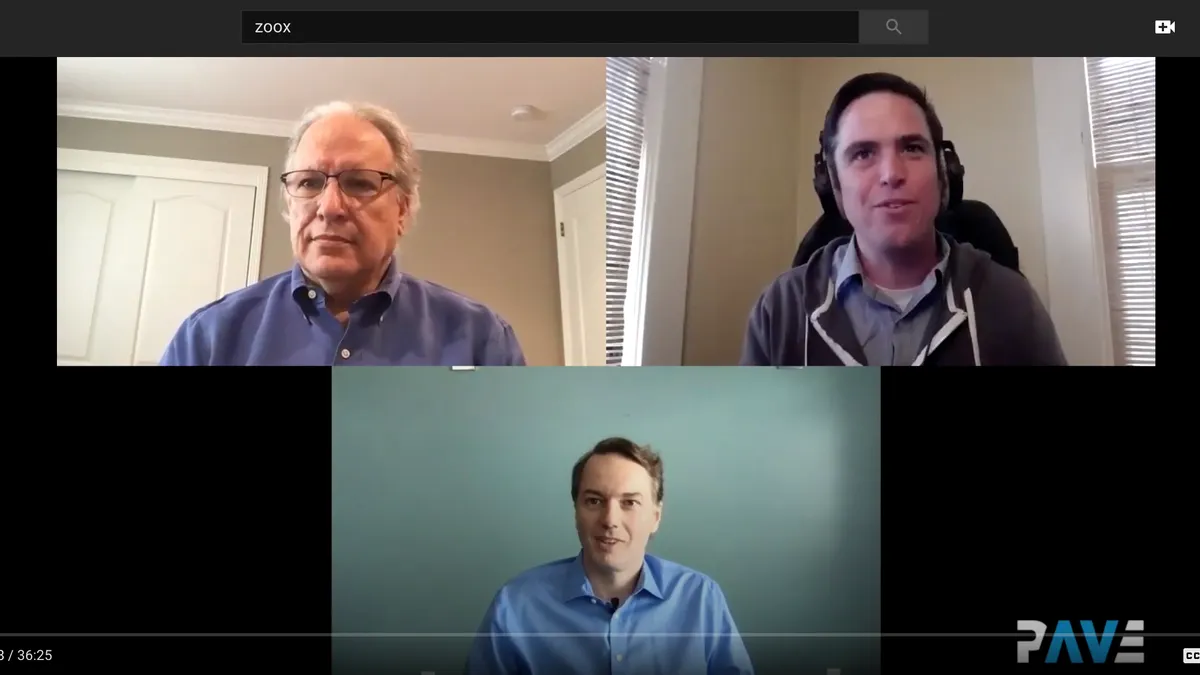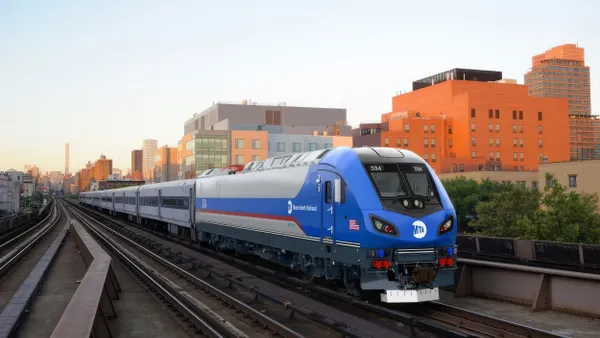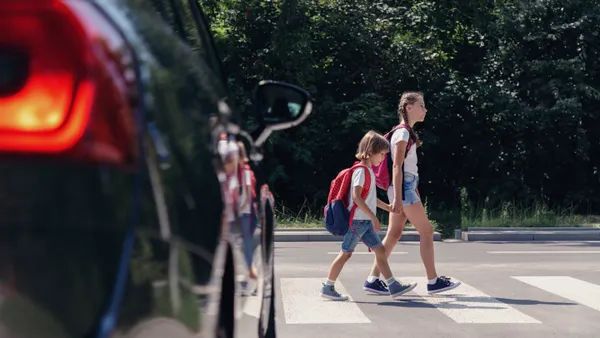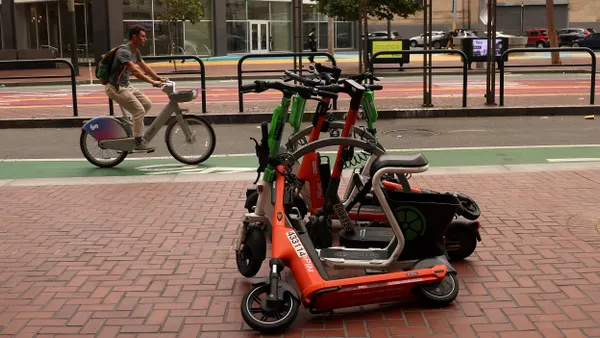In a webinar this week, former National Highway Traffic Safety Administration (NHTSA) head Mark Rosekind shared a stark statistic: Approximately 36,120 people died in motor vehicle accidents on U.S. roadways in 2019, with 94% of the crashes related to human choice or error.
The statistic set the stage for a conversation around autonomous vehicles (AV) and their potential to drastically reduce roadway accidents. The conversation, hosted by Partners for Automated Vehicle Education (PAVE), featured Rosekind — now the chief safety innovation officer at AV startup Zoox — and Chris Urmson, CEO of AV startup Aurora.
At the core of the conversation was an understanding that the success of self-driving vehicles will rely largely on consumer education and comprehension of the technology. In this respect, Rosekind and Urmson spoke candidly on the topics of technical development, cybersecurity, regulation and even the new coronavirus disease (COVID-19) to dispel common misconceptions regarding AVs.
Smart Cities Dive identified five key myths debunked by these self-driving startup leaders:
Myth 1: Safety is a feature built into AV tech
While safety is the key focus of self-driving technology among all companies and regulators, it will require years of research and an internal adoption of safety practices to truly develop, Urmson said.
"Safety is not one of these things you kind of bolt on at the end. It's not one of these things where you have a team that's building a technology and saying, 'Ok now we need to make it safe,' ... It starts with building a safety culture in your organization," he said. This includes encouraging employees to speak up when they have concerns and weaving safety practices into the way technology is developed, Urmson said.
Rosekind said this can be a challenge as the automotive industry has operated by using reactive safety practices for a century.
"There's been a crash, somebody's hurt, somebody's died. [Then we] figure out how we fix it, maybe for the next one," he said. The AV industry must move toward a proactive safety culture, as seen in the aviation industry, to prevent crashes from happening in the first place, he said.
"That's what this new technology offers more than anything before," Rosekind said.
Myth 2: Regulators are stalling AV development
Since the onset of self-driving systems, tech developers have scrambled through an evolving regulatory landscape. While many state governments have enacted varying degrees of AV regulation, federal legislation has stalled in Congress amid concerns about the adequacy of safety provisions.
The U.S. Department of Transportation is aware of a need for guidelines, however. In January, Transportation Secretary Elaine Chao unveiled the department's newest autonomous vehicle (AV) guidelines, AV 4.0, which intend to foster collaboration in deploying advanced driving systems.
Therefore, when asked if regulators are to blame for developmental roadblocks in self-driving technology, Rosekind promptly said "no." He pointed to complications around having three varying regulatory bodies — federal, state and local governments — but said challenges arise more when developers push the limits of compliance in their jurisdictions.
"We need innovation, we need data-driven best practices, then we’ll eventually get the regulation we need," he said. "It's absolutely in our future."
Myth 3: All AVs will eventually face the 'trolley problem'
For decades, the "trolley problem" has been used as a thought experiment to discuss ethics and moral dilemmas. The problem presents a trolley heading down railroad tracks toward a group of people, with an option to redirect the trolley onto a track where there's only one person. The situation poses the question: Which path should the trolley driver take? Is there even a right answer?
The classic experiment has been referenced repeatedly when discussing self-driving technology: If a child runs into the street, would an AV hit that child or swerve and hit another car? According to Rosekind, no AV should ever have to make such decisions.
"A really good engineer should never put you in that situation," he said.
Urmson explained the trolley problem is "much more of a tool for having a conversation around our societal values," as opposed to a situation that developers worry about.
"The trolley problem is not new, we didn't come up with it … It's really a question of, how do we value life and what’s our expectation on that?" he said.
Myth 4: AV systems are at high risk of cyberattacks
With the development of such high-tech driving systems, many researchers have questioned if AVs are at an increased risk of cyberattacks. And while cybersecurity definitely matters in AV development, Urmson said it's not as big of a concern as consumers or researchers may think.
"The thing that is overlooked sometimes is that our vehicles today are already very connected," he said, pointing to existing developments like cellular vehicle-to-everything (C-V2X) technologies already widely used on U.S. roads. The inherent nature of AVs to be equipped with more electronics does not necessarily make them more susceptible to risks, he said.
"Most cyber crime is about making money, and there isn't that much money to be made in taking control of a vehicle on the road," Urmson said. "While we need to be thoughtful about the long-term kinetic risk and the injury risk that's there, it's important, but it's not the most important risk that we have to be working against."
Myth 5: AVs are the magic bullet to solve safety and mobility problems
AV advocates have long touted the many potential benefits of AVs: increased safety, lower greenhouse gas (GHG) emissions, more productivity on commutes. Amid the coronavirus pandemic, AVs have been used by some agencies to safely transport goods and reduce the kinds of human interaction that's typically experienced with traditional human-driven vehicles.
Despite these benefits, however, Rosekind made clear that self-driving cars are not a magic bullet. While he believes the industry is currently in a "moonshot moment" to transform societal systems, AVs won't serve as a solution to all safety and mobility problems currently seen today.
"They are not a panacea," Rosekind said. "As much as we could say, 'If they were here today what a difference they could make,' let's not think for a moment that we're going to get to zero fatalities in the next week or that we're going to solve all of our social problems."











